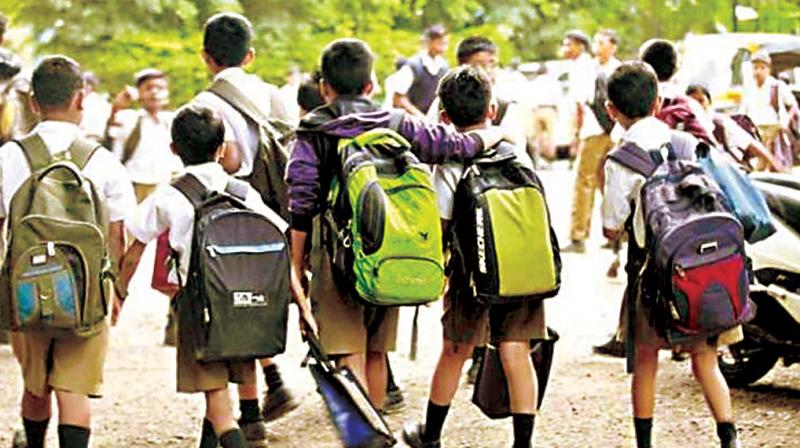Among multitude of problems, fix education system first
The government itself admits that it saved Rs 60,000 crore by using Aadhaar, showing the huge leakage in the system.

India’s problems are very large with a population of 1.3 billion, a GDP of 1.51 lakh crore, 1 billion people earning 2 dollars and less per day, 30% children malnourished, Infant Mortality Rate of 45 per 1000 live births and a Maternal Mortality Rate of 175 per 1,00,000 live births. These challenges can be solved only by the government which collects 18% of the GDP in form of taxes. The total spending by state and centre per year is Rs 40 lakh crore. India has adequate resources to meet the minimal needs of people but the key issues are the effectiveness of spending, low productivity of government spending and corruption of the system. In many facets of government work, the many earmarked does not reach the beneficiary or is ill-spent. The government itself admits that it saved Rs 60,000 crore by using Aadhaar, showing the huge leakage in the system. If one looks at the leakage per year and takes it over the last 10 years, the amount will be very large.
Corporate Social Responsibility (CSR) by business and philanthropy by individuals can never be a substitute for government spending in social welfare, as no corporate or individual can ever match the government’s reach in terms of the staff or the money it has. The governments, both state and centre employ over 2.5 crore people. Therefore, what private initiatives can do is only a small drop in the ocean and we should be careful not to have high expectations on them. They are never solutions to India’s challenges. Even when individuals pledge to give half their wealth, it does not mean spending half the wealth on public welfare but creating institutions like trusts to park their wealth, somehow control the institution and spend part of income on public spending. If somebody pledges to give away Rs 10,000 crores, it mostly means that they will create a trust where the money is kept and it may earn 500-600 crores in returns as the spending maybe 400-500 crores per year.
The real solution is to make sure the government spending is effective. For example, in the health sector, particularity for tertiary care, the government can have a universal health insurance, giving the power to the citizens to go for treatment to any hospital of his/her choice. This will foster competition, empower citizens and decrease cost and also create capacity as the size of the market expands due to better buying power. If government hospitals too are made into trusts and charge the patients for treatment on a fully insured basis, quality of government hospitals will go up and the survival will depend not on government grants but their ability to provide good services and attract patients who need their care.
Today, there are huge complaints about government schools failing to provide quality education, and it is not because the government spends less for the sector. Across India, it costs a minimum of ' 25,000 for the government to educate a child per year in school. Despite this spending, teacher absenteeism is high, scholastic achievement is low and there are no signs of improvement. Spending keeps on increasing year after year while results decline. If these students were given vouchers which entitle them to pay the same amount as fee in any school of their choice, government schools will have to attract students by providing better teaching, the situation will change.
We are faced with a broken government delivery system, increasing costs, corruption, low productivity and increasing spending with the poor being hostages to government employees. The only way to reverse this trend is to open up the system to competition and empower citizens directly by making government as one among the service providers and not the exclusive one. In many areas, the government plays three primary roles: as a policy maker for making policy for all citizens - which it does fairly well; as a regulator to ensure quality services and reach- where the record is average; as a service provider where the record is abysmally bad. The major reason being the roles getting mixed up over the process, with the government neither unable to regulate its own institutions nor to ensure compliance to standards, contributing to other providers leading to rent seeking and thereby corrupting the system. As a service provider, mechanisms to ensure quality service is poor, adequate oversight is missing and there is a lack of focus.
The service provision part of the government is where the challenge is. This can only be fixed by greater competition and empowering citizens directly as it has been done by the Direct Benefits Transfer (DBT). If citizens are economically strong, they will go to a service provider of their choice – either government or private. If the citizen is economically weak or poor, they will be forced to go to government service providers, where a large number is of low quality. This is why government servants themselves put their children into private schools, mainly patronise private hospitals, fly in private airlines and generally do not use much of the services the government provides. The government passing a law asking government employees to mandatorily admit their children to government schools, go to government hospitals and use government services as opposed to their private counterparts can be the solution to the problem. This too might improve quality. While CSR and philanthropy are good to have, they are not a complete solution to India’s challenges.

